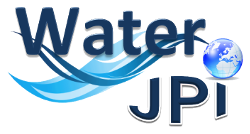WATERPEAT
Project Coordinator
 Bjørn Kløve: bjorn.klove@oulu.fi
Bjørn Kløve: bjorn.klove@oulu.fi
Institution: University of Oulu
Country: Finland
Abstract
Peatlands are important in several regions as they contribute to many ecosystem services such as drinking water provision, biomass production and flood retention. When peatlands are drained, negative environmental impacts include reduced surface water quality, loss in biodiversity and greenhouse gas (GHG) emissions. Peatland water management must consider ways to: i) reduce water-related environmental impacts, ii) produce crops and biomass, iii) limit subsidence and soil loss, iv) prevent fire during droughts, v) offer viable solutions for restoration and after use of degraded sites. Water management must consider different type of peatlands, different land use options, climate, and socio-economic settings. As peat subsides, acid sulphate soil may be exposed with time (from below peatlands). In coastal lowlands, acid surges and salt water intrusion add to the complexity of water management. To limit impacts on surface water and to reach environmental and sustainable development goals, water and land protection on peat soils should be better developed. The potential mitigation options depend on several issues such as land use, peatland type, hydrological setting, climate, geology, and the socio-economic setting. Several recommendations for future peatland management have been discussed, suggested and/or required by authorities and NGOs. The options suggested often involve water management with effects on land use and therefore on local communities, land owners and biomass producers. The options outlined should be scientifically sound and tested in practice. Lack of effective, simple and robust water management options to achieve the policy goals result in stakeholders’ frustration, lack of compliance, and poor environmental practice guided by an “opportunity driven strategy” rather than “conservation of ecosystem services” approach. This proposal aims to develop the scientific knowledgebase on peatlands and water management for different types of peatlands found in peat rich areas of Northern Europe and Indonesia. The work is organized in five work packages (WPs) devoted to: i) Analysis of peatland use impacts on hydrology and water quality, ii) Solutions for efficient water management and water quality control, iii) Tools for integrated land and water management on peat soils, iv) Stakeholder involvement and communication to outline best management options, v) Project management and coordination. A database on peat soil hydrology, water management options and a toolbox on methods for water management will be developed with educational material for capacity building in different regions. This will allow stakeholders to make water management plans on local and catchment scale that meet multiple policy goals and allow a transition for smarter water and land management, and suitable solutions to future decision-making.
Funder of the project:
The Research Council of Norway
The Irish Environmental Protection Agency
European Commission.
